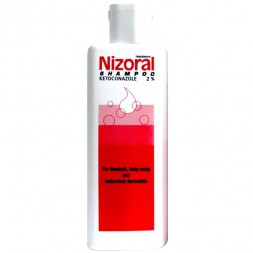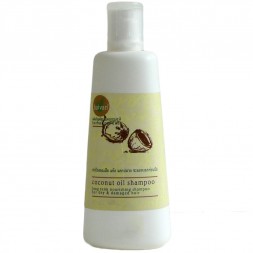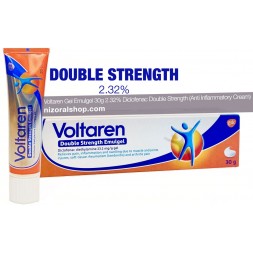
If you're battling dandruff, scalp fungus, or other fungal skin infections, ketoconazole is one of the most effective ingredients recommended by dermatologists. It’s available in various forms, notably ketoconazole shampoo (like Nizoral Shampoo 2%) and ketoconazole cream (such as Nizoral Cream). Understanding when and how to use each form correctly is crucial for successful treatment. Here, we'll compare ketoconazole cream versus shampoo to help you determine the best choice for your needs.
What is Ketoconazole, and How Does it Work?
Ketoconazole is a powerful antifungal medication that combats fungal infections such as seborrheic dermatitis, dandruff, ringworm, and athlete's foot. It works by disrupting fungal cell membranes, effectively killing the fungi responsible for your symptoms.
Despite their shared active ingredient, ketoconazole cream and shampoo serve distinct purposes and should be chosen based on the specific condition you’re addressing.
When to Use Ketoconazole Shampoo
Ketoconazole shampoos, like Nizoral Shampoo 2%, are specially designed for treating scalp conditions. Commonly, they're used to manage:
- Dandruff and itchy scalp
- Seborrheic dermatitis affecting the scalp
- Mild scalp psoriasis exacerbated by fungal infections
- Other fungal-related scalp irritations
Advantages of Ketoconazole Shampoo
Ketoconazole shampoos are extremely easy and convenient for treating scalp issues. They effectively treat large areas of the scalp simultaneously, making them ideal for widespread fungal infections. Regular use quickly reduces dandruff, itchiness, and redness.
To use ketoconazole shampoo effectively, massage it onto wet hair and scalp, let it remain for three to five minutes, then rinse thoroughly. Usually, using it twice weekly initially and then once weekly for maintenance is sufficient.
When to Use Ketoconazole Cream
Ketoconazole creams, such as Nizoral Cream, are topical treatments applied directly to localized fungal infections on the skin or smaller patches on the scalp. Creams are particularly suited for:
- Localized scalp infections and stubborn dandruff patches
- Facial seborrheic dermatitis
- Ringworm and athlete’s foot
- Other localized fungal infections on the skin
Advantages of Ketoconazole Cream
Creams provide a concentrated dose of ketoconazole directly to the affected area, making them highly effective for targeted treatment. They’re especially beneficial if you have persistent, localized fungal infections or if a shampoo alone isn't sufficient.
To use ketoconazole cream effectively, clean and dry the area first, then apply a thin layer, gently rubbing it in until absorbed. Typically, applying twice daily is recommended until symptoms resolve.
Can You Use Ketoconazole Cream and Shampoo Together?
Absolutely. In many cases, combining both ketoconazole shampoo and cream can enhance treatment effectiveness, especially if you're experiencing persistent or severe symptoms. Using shampoo to broadly control dandruff while applying cream directly to localized, stubborn areas is highly effective and dermatologist-approved.
For a comprehensive approach, you can conveniently find both treatments at our online store. Visit our Nizoral Cream section for targeted topical treatments, or explore the Nizoral Shampoos collection for scalp-wide relief.
Choosing the Right Product: Quick Reference
- Shampoo: Ideal for widespread scalp issues, dandruff, and seborrheic dermatitis affecting larger scalp areas.
- Cream: Perfect for localized fungal infections, stubborn scalp patches, facial seborrheic dermatitis, and skin infections like athlete’s foot.
- Combination: Best for persistent or severe cases, combining broad scalp treatment (shampoo) with targeted topical treatment (cream).
Additional Recommendations for Effective Results
Regardless of which product you choose, always follow these tips to maximize effectiveness:
- Be consistent with your treatment—skipping days can significantly reduce effectiveness.
- Always clean and dry affected areas thoroughly before applying cream.
- For shampoo, ensure you allow sufficient contact time (3–5 minutes) before rinsing.
- Avoid harsh soaps or other irritants that can exacerbate fungal infections.
- Consult a dermatologist if symptoms persist despite regular treatment.
When to Consult a Dermatologist
If you've used ketoconazole cream or shampoo consistently for four weeks and haven't seen significant improvement, consult a dermatologist. They may recommend prescription-strength options or alternative treatments tailored specifically to your condition.
Making the Right Choice for Your Condition
Choosing between ketoconazole cream and shampoo depends on your specific symptoms, the location of your infection, and your personal preferences. Both products offer potent antifungal relief, and using them correctly can dramatically improve your skin and scalp health.
Take action today. Select the right ketoconazole treatment for your needs and say goodbye to uncomfortable fungal symptoms for good.





